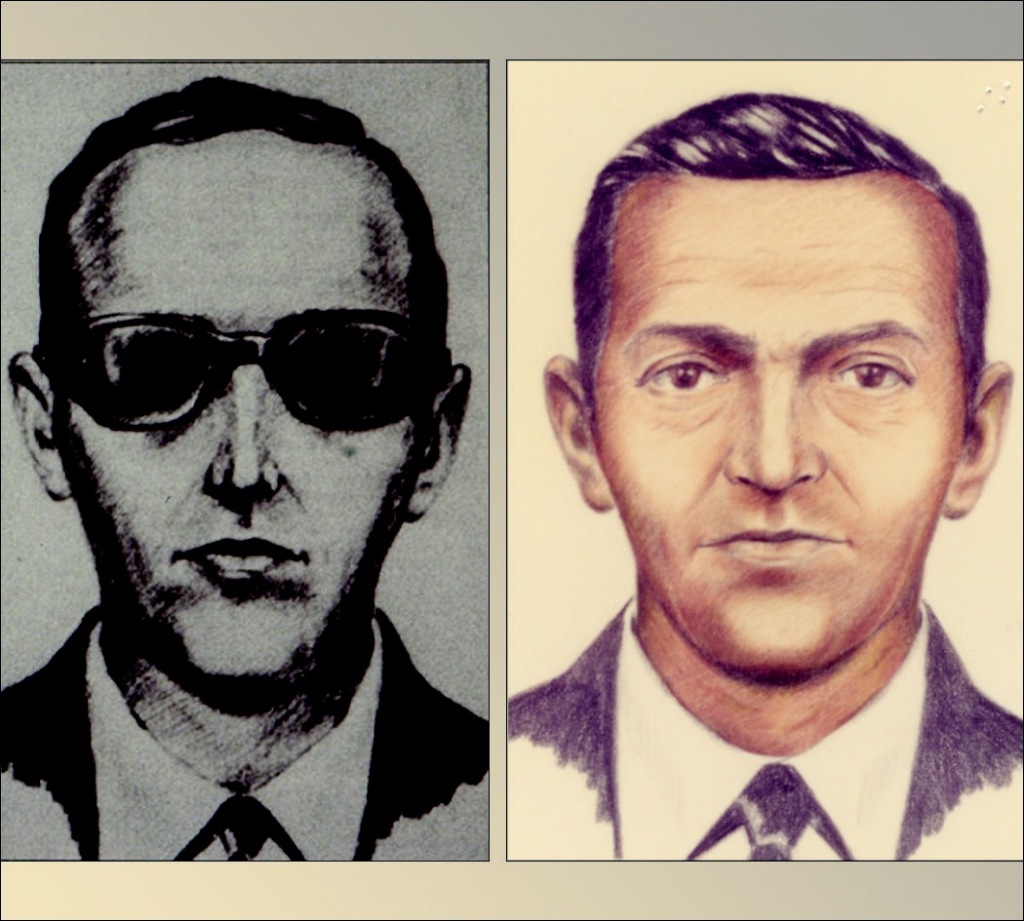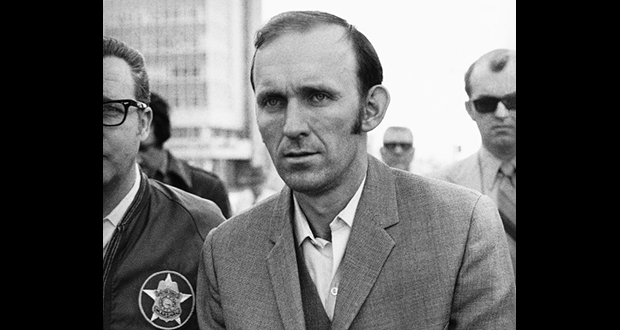Remains the only unsolved case of air piracy in the United States.
Next year will mark the 50th anniversary of DB Cooper’s disappearance, or that of Dan Cooper, the name used when booking an airline ticket. But before considering who Dan Cooper really was, let’s have a look at what he did.
A man in his mid-40s appeared at the Northwest Orient Airlines counter at the airport in Portland, Oregon and paid twenty dollars in cash for a one-way ticket to Seattle, Washington on Flight 305.
Wearing a black overcoat, a black business suit, a white shirt, a black tie and brown shoes and carrying a black attaché case and a brown paper bag, he melted into the crowd boarding the Boeing 727-100. Cooper sat down in seat 18C before ordering a bourbon and soda, sipping whilst waiting for takeoff.
Shortly after 3 p.m., he handed a note to a flight attendant who slipped it in her pocket
Then he spoke. ‘Miss, you better look at that note,’ adding: ‘I have a bomb.’
An alarmed Florence Schaffner did exactly what he asked. ‘I have a bomb in my briefcase,’ it read. ‘I want you to sit next to me.’
She sat down.
The man said nothing, merely opened his ‘cheap’ attaché case, momentarily revealing a mass of wires and ‘red sticks’ before shutting it. Then he turned to Schaffner, telling her to write down what he said.
A short time later, Schaffner was on her way to the cockpit with a note for the captain. Dan Cooper wanted four parachutes (two primary, two reserve), a fuel truck on standby at the Seattle-Tacoma airport – and $200,000 in twenty-dollar bills.
The parachutes and money were exchanged for all 36 passengers, the plane was refueled and Cooper and a skeleton crew took off for the second leg of his journey, with stops for fuel in Reno, Nevada and Yuma, Arizona. His destination was Mexico City.
But he never made it.
Not long after 8:00 p.m., Cooper got up, removed his black J.C Penney clip-on tie, went to the back of the plane and jumped out, parachuting his way to freedom somewhere between Seattle and Reno, Nevada and in the middle of a rainstorm, no less.
While he knew that the authorities in Mexico City had been alerted, it didn’t matter because Cooper never intended to leave the United States, hence the request for parachutes. The crew claimed to have been amazed, what did they think he wanted the parachutes for? He’d planned to jump from the plane all along.
All he left behind was the clip-on tie.

The FBI interviewed suspect after suspect; by the fifth anniversary of the hijacking, the Bureau had questioned more than 800 men (the number of ‘serious suspects’ would climb to over 1,000 by 2016), but had not identified Dan Cooper. Nor found his body.
Then an eight-year-old boy provided a clue.
On 10 February 1980, Brian Ingram was on holiday with his family at Tena Bar, a stretch of the Columbia River; the closest town was Vancouver, Washington. Brian and his father were building a campfire when the little boy, who was raking the riverbank, unearthed three bundles of cash, twenty-dollar bills bound with rubber bands, approximately $5,800, the bills degraded yet recognisable.
The Ingrams contacted the FBI.
The Bureau concluded that the bundles were lost when Cooper parachuted out of the plane, falling into the Little Washougal River or the Washougal River, the only rivers in the vicinity with currents powerful enough to carry the packets of cash downstream to the Columbia River.
But as exciting as the discovery was, it failed to lead to DB Cooper. And while he might not have survived his parachute jump, the Bureau believed he did.
So who was DB Cooper?
It’s difficult to research DB Cooper and not read about Richard F. McCoy.
Richard Floyd McCoy Jr served two tours of duty in Vietnam. On 7 April 1972, he boarded a Boeing 727 in Denver, Colorado. With what appeared to be a hand grenade in one hand (and what turned out to an unloaded handgun in the other), McCoy demanded four parachutes and $500,000 in exchange for the safe return of all passengers. His terms were met. The plane took off from San Francisco International Airport but McCoy didn’t stick around long, parachuting over Provo, Utah.
But while Cooper left no fingerprints behind, McCoy did, on both the note he wrote listing his demands and a magazine. He was arrested on 9 April, caught with the ransom money.
McCoy was sentenced to 45 years, but made a break for it in 1974, crashing a garbage truck through the front gate of the Lewisburg Federal Penitentiary in Pennsylvania.
He didn’t enjoy his newfound freedom for long, killed in a shootout with FBI agents, rather an unseemly way to go if you ask me.
While the premise at least one book is that McCoy was DB Cooper (published in 2011, almost certainly to coincide with the 40th anniversary of the hijacking), there are several reasons why he was not.
McCoy had light blue eyes; Cooper had brown eyes.

McCoy had a strong Southern accent; Cooper had no discernible accent.
McCoy had a ‘raspy’ voice as well as a noticeable speech impediment, the legacy of a surgically repaired cleft palate. Cooper had neither.
McCoy’s ears stuck out almost at right angles to his head, earning him the nickname ‘Dumbo’. No one on Flight 305 recalled that DB Cooper had unusually prominent ears.
McCoy was a Mormon who neither drank nor smoked; Cooper ordered a bourbon almost as soon as he was seated. And he was a heavy smoker.
The most likely suspect died last year.
Robert Wesley Rackstraw (1943-2019) is of such interest to anyone curious about DB Cooper that he merits his own blog entry, to be posted on 26/11/2020.
